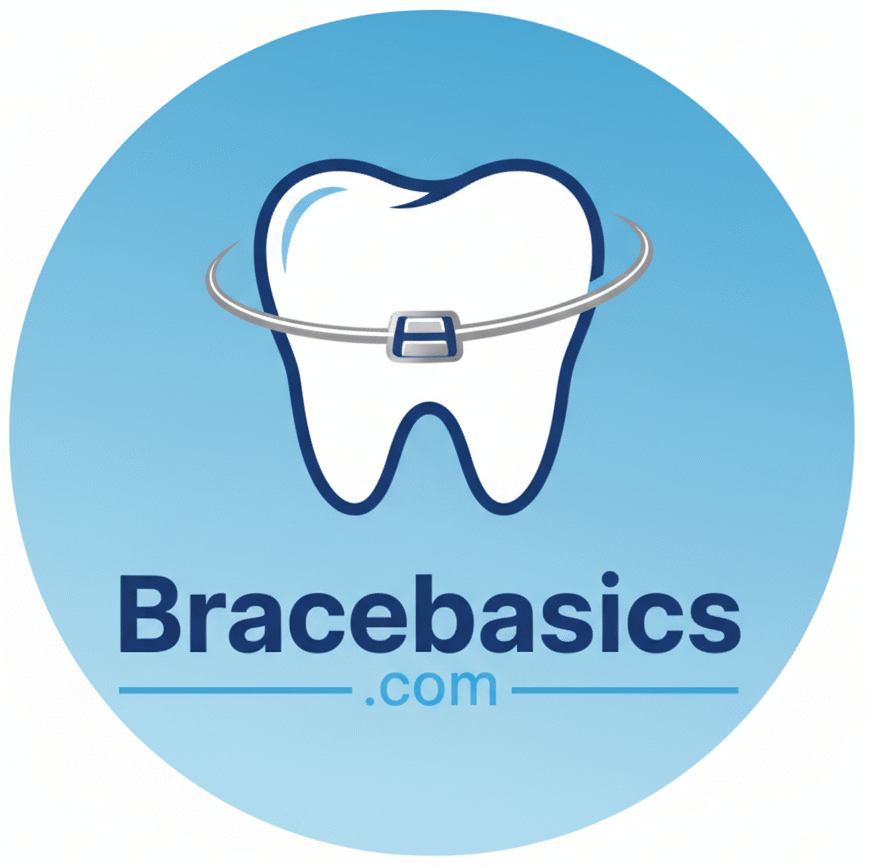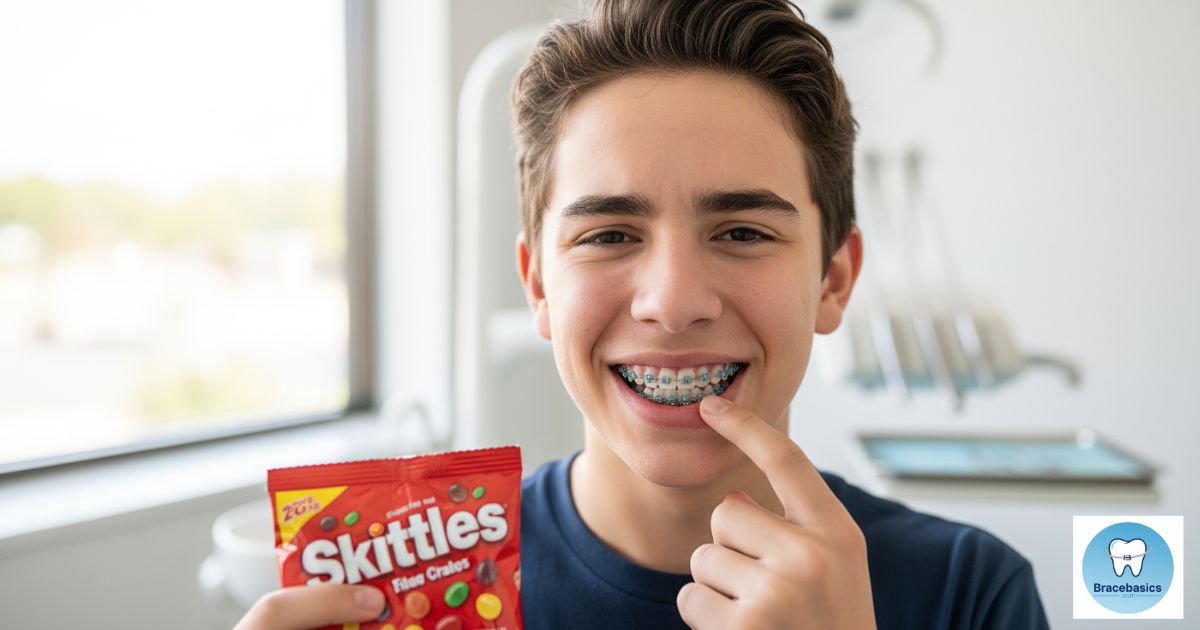Colorful, chewy, and irresistibly sweet—Skittles have been a favorite treat across the United States for decades. Yet, when braces enter the picture, these little candies turn from harmless snacks into potential troublemakers. Braces patients must stay careful with sticky and hard candies, as they can quietly undo months of progress. So, can you eat Skittles with braces? The answer reveals more than just a yes or no—it’s about understanding how these candies affect your teeth and treatment.
Quick Answer: Can You Eat Skittles With Braces?
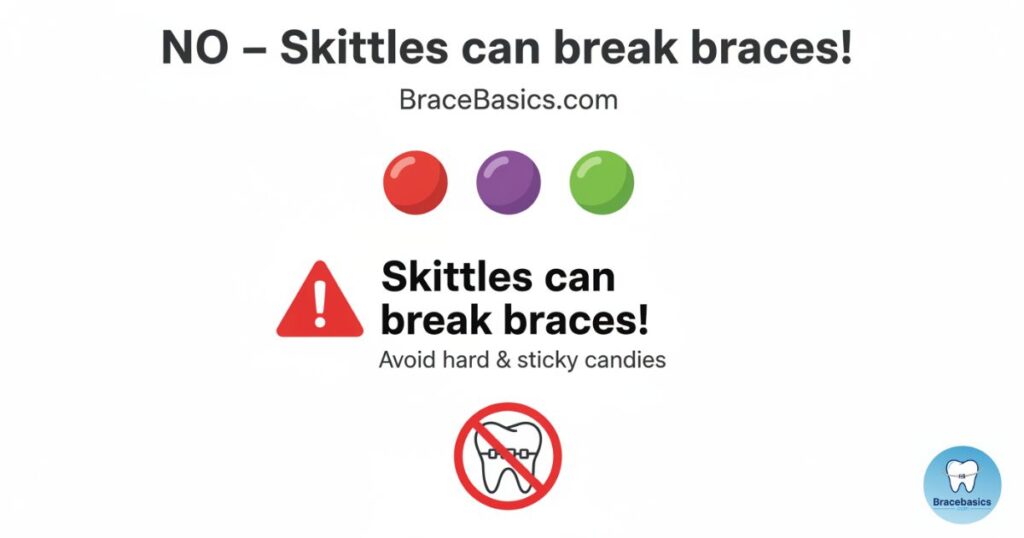
No, you can’t eat Skittles with braces. These chewy and hard candies can break brackets, bend wires, and trap sugar around your teeth, leading to plaque buildup and cavities. It’s best to skip Skittles until your braces come off and choose soft, braces-safe sweets instead.
Why Skittles Are a Problem for Braces
The Sticky Texture
Skittles might seem small, but their sticky texture can cause big damage. Once chewed, the sugary coating softens and sticks tightly to brackets and wires. This sticky residue becomes a breeding ground for plaque and bacteria, which can lead to tooth decay and white spot lesions. The constant stickiness also strains the adhesive that holds braces in place, causing bracket damage that often requires emergency repairs.
The Hard Outer Shell
Every Skittle has a tough shell that cracks only under pressure. When you bite down, that hard surface presses directly against your braces. This sudden force can loosen brackets, bend orthodontic wires, or even crack enamel. The hard shell also resists saliva, allowing sugar to linger longer, feeding bacteria, and slowing orthodontic movement. Over time, such repeated stress can delay treatment results and increase discomfort.
What Happens If You Eat Skittles With Braces?
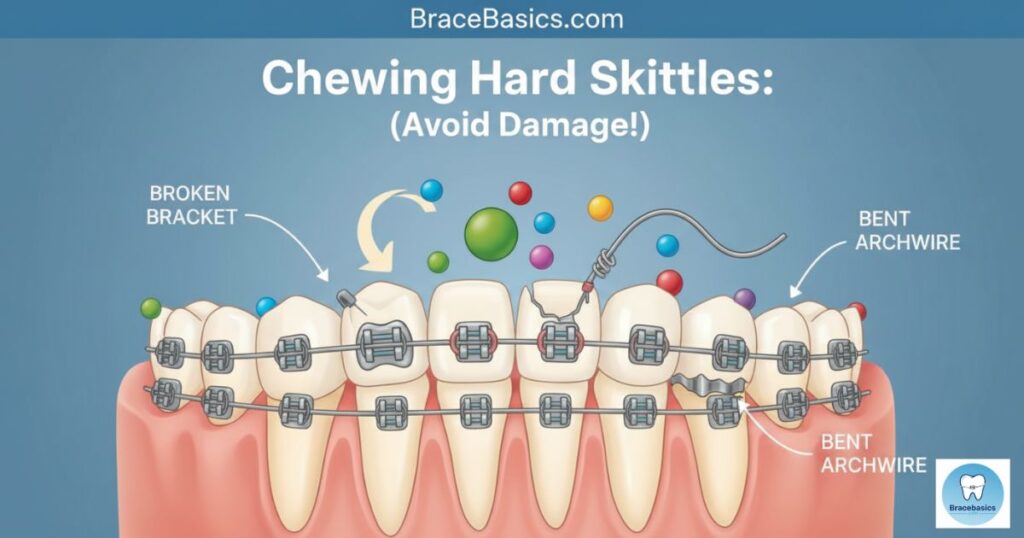
Chewing Skittles with braces doesn’t just feel risky—it actually is. The combination of stickiness and hardness can bend wires, loosen brackets, and trap sugar beneath the braces’ surface. That trapped sugar fuels bacterial growth, leading to plaque buildup, gingival swelling, and tooth sensitivity. Once sugar remains lodged behind wires, it becomes difficult to remove even with careful brushing, leading to decalcified white spots that stay permanently after treatment ends.
| Problem | Cause | Result |
| Loose brackets | Biting hard candy shells | Pain and repair visits |
| Plaque buildup | Trapped sugar under wires | Tooth discoloration |
| Gum irritation | Sticky residue | Swelling or bleeding gums |
| Delayed treatment | Damaged wires | Extended braces duration |
Safer Alternatives to Skittles
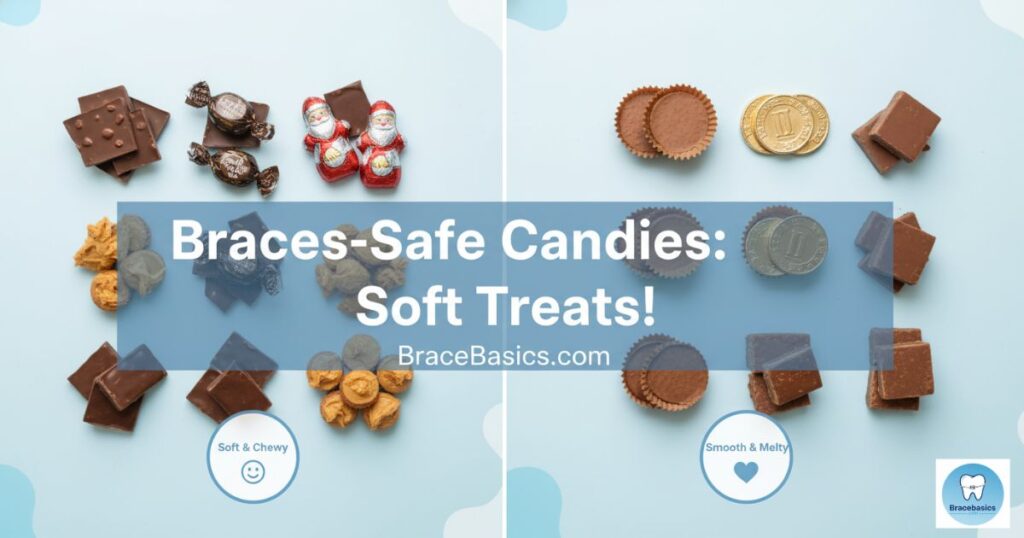
Soft Candies You Can Eat
Not every candy spells disaster. Soft, melt-in-your-mouth treats are much safer for braces wearers. Options like milk chocolate (without nuts), soft caramels, and peanut butter cups dissolve quickly without clinging to metal parts. These sweets satisfy sugar cravings while keeping your braces safe from damage. The key is moderation—occasional enjoyment followed by proper cleaning prevents any harm.
What Candy Can You Eat With Braces?
Sugar-Free Options
Sugar-free candies offer a smarter path for those craving something sweet. Choose sugar-free mints, jellies, or lozenges that melt easily. These candies reduce the risk of bacterial buildup and prevent acid erosion. They also freshen breath, which is a bonus during orthodontic treatment. Look for candies with xylitol, a natural sweetener that fights cavity-causing bacteria.
Can You Eat Cereal With Braces?
If You Accidentally Ate Skittles
Mistakes happen, and one Skittle won’t destroy your braces if you act quickly. Start by rinsing your mouth with warm water to loosen sticky bits. Then, brush gently around brackets to remove sugar residue. Use an interdental brush or floss threader to clean tight spots. If a wire feels bent or a bracket seems loose, avoid pulling it. Instead, book a visit with your orthodontist as soon as possible. Ignoring damage may cause longer treatment delays and extra costs.
How to Brush Teeth with Braces
Tips to Satisfy Sweet Cravings Safely
Sugar cravings don’t disappear with braces, but they can be handled wisely. Enjoy naturally sweet treats like smoothies, yogurt parfaits, or mashed fruits. These options are gentle on braces and kind to your teeth. After any sugary snack, rinse well and brush using a fluoride toothpaste. For deeper cleaning, add a water flosser to your routine—it clears debris from spots a toothbrush can’t reach, keeping your braces fresh and clean.
Expert Advice from Orthodontists
“Orthodontists strongly advise avoiding sticky and chewy candies like Skittles during treatment.”
Orthodontic experts agree that sticky candies are one of the main causes of broken braces. Each time a bracket detaches, it interrupts the movement of teeth and lengthens treatment time. Chewy sweets also increase the risk of enamel damage, forcing extra appointments and discomfort. Following your orthodontist’s candy restrictions ensures faster, smoother, and pain-free progress toward your perfect smile.
Final Verdict: Can You Eat Skittles With Braces?
No, you shouldn’t eat Skittles with braces. The risks far outweigh the reward. Sticky candies like Skittles can cause broken brackets, tooth decay, and treatment delays. Choosing braces-friendly sweets instead protects your teeth and helps you achieve a healthier smile faster. Remember, every bite counts toward your smile’s success—protect your braces like an investment.
FAQs
Can I eat Skittles if I cut them in half?
Even halved Skittles are dangerous. Their sticky texture and sugar content can still loosen brackets and promote decay.
What candy can I eat with braces?
Soft chocolates, peanut butter cups, and pudding-based sweets are generally safe when eaten occasionally and followed by proper cleaning.
How long after getting braces can I eat Skittles?
Skittles should be avoided for your entire orthodontic journey. Eating them too soon may cause unnecessary repairs and discomfort.
What to do if a Skittle gets stuck in my braces?
Rinse immediately, use an interdental brush to dislodge pieces, and check for any damage. If pain or looseness occurs, contact your orthodontist.
Can I eat Skittles after braces removal?
Yes, once your braces are off, Skittles are safe again—just remember to brush and rinse afterward to keep your smile healthy.
What candy can you eat with braces?
You can safely enjoy soft candies like plain chocolate bars, peanut butter cups, and soft mints. These melt easily and don’t damage braces. For more details on braces-safe treats, check out what candy you can eat with braces.
Are Skittles good for your teeth?
No, Skittles aren’t good for your teeth. Their sticky texture and high sugar content can cause plaque buildup and enamel damage. To protect your smile, learn about foods you can not eat with braces.
Can you have Starburst with braces?
No, Starburst is not safe for braces. It’s chewy and sticky, which can pull off brackets and bend wires. If you’re craving sweets, try softer snacks listed in our guide on soft snacks for braces.
What food am I not allowed to eat with braces?
Avoid hard, sticky, and crunchy foods like Skittles, nuts, popcorn, and chips. These can break brackets or wires and delay your treatment. For a full list, visit foods you can not eat with braces.
Comparison Table: Skittles vs Braces-Safe Candies
| Type | Texture | Risk Level | Braces-Friendly |
| Skittles | Sticky & hard | High | ❌ |
| Soft Chocolate | Smooth & soft | Low | ✅ |
| Peanut Butter Cups | Creamy & soft | Low | ✅ |
| Sugar-Free Mints | Dissolves easily | Very Low | ✅ |
References
According to the American Association of Orthodontists, sticky and hard candies like Skittles should be avoided completely because they can bend wires, loosen brackets, and trap sugar under braces.
The Colgate Oral Health Center also warns that chewy sweets and hard treats can damage orthodontic appliances and increase cavity risk if not cleaned properly.
A guide from Healthline explains which foods are safe to eat during orthodontic treatment and how to prevent common dental issues caused by sugar buildup.
The WebMD dental section highlights that regular oral hygiene and choosing braces-safe snacks can reduce discomfort and treatment time.
Finally, Mayo Clinic emphasizes that avoiding sticky and crunchy foods helps protect both your teeth and braces, ensuring a smooth orthodontic journey.

Hi, I’m Dr. Martin, the founder of BracsBasics.com. With years of experience in orthodontics, I’ve made it my mission to simplify braces care for patients of all ages. Here, you’ll find easy-to-understand advice, practical tips, and reliable resources to make your braces journey smoother, healthier, and stress-free. My goal is to help you smile with confidence every step of the way.
